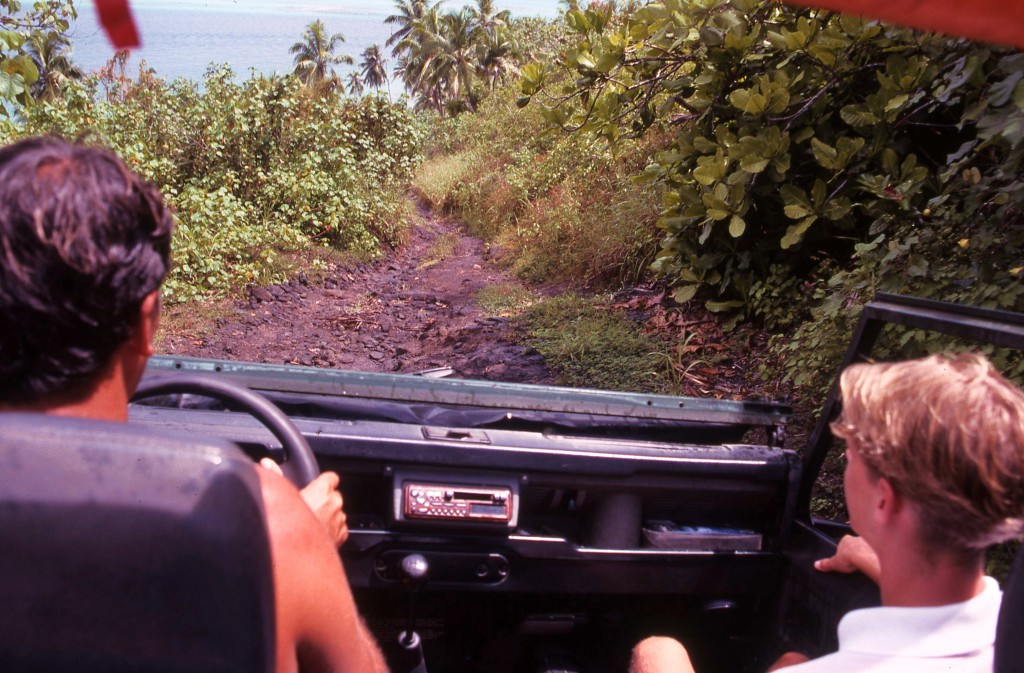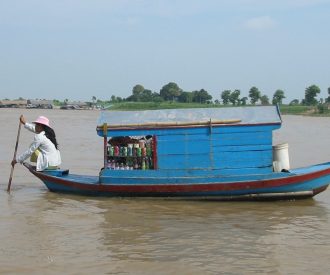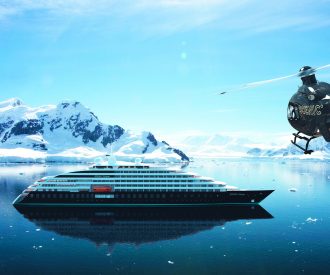Snapshot: Compagnie Polynesienne de Transport Maritime (C.T.P.M.) is a French Polynesian shipping line owned by the Wong family who have operated passenger-freighter ships in the remote South Pacific Marquesas Islands for three decades and cargo service dating back another 30 years. While the ship, ARANUI 5 based at Papeete, Tahiti, provides a necessary freight and passenger service for the local population (numbering less than 10,000), as there are few airports in the sprawling volcanic island chain, the voyage has increasingly developed into a cruise experience for foreign visitors as subsequent ships have become plusher. The 208-passenger ARANUI 3, built along the Danube in Romania in 2002, replaced a converted freighter rebuilt to carry 100 passengers. ARANUI 3 Was withdrawn at the very end of 2015 to be replaced by the larger Chinese-built 254-passenger ARANUI 5. The number “4” is unlucky for the Chinese Wongs, so it is being skipped. The round voyages last 14 days, and Aranui means great highway.
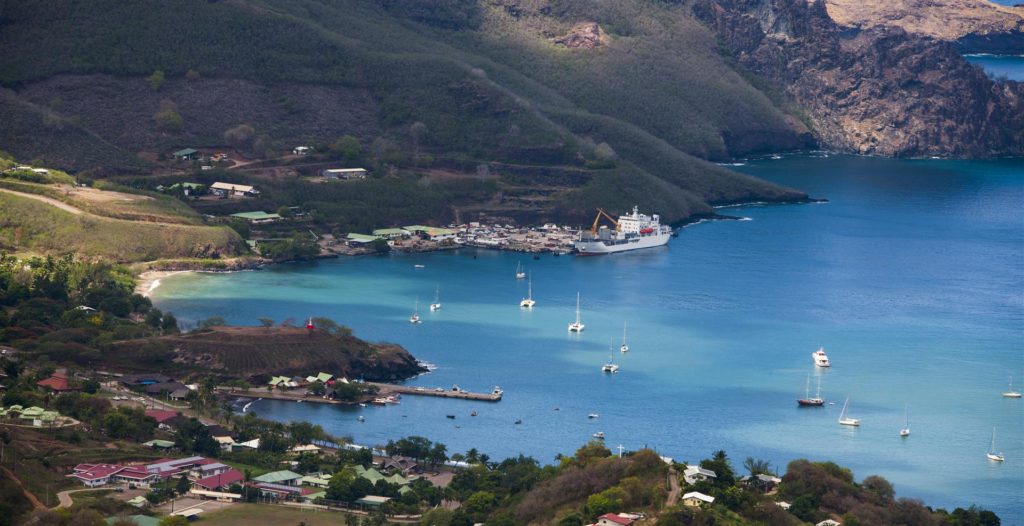
Aranui 5 docked at Nuku Hiva. * Photo C.T.P.M.
Ship, Year Delivered & Passengers: ARANUI 5 (built 2016 & 254 passengers), registered in France.
Passenger Profile: While the passengers come from all over the world, the largest percentage are French as the islands are French overseas territories, and the rest are a mixture of Europeans, Australians and North Americans, plus others. Ages range widely. The crew is mostly burly and friendly Marquesans.
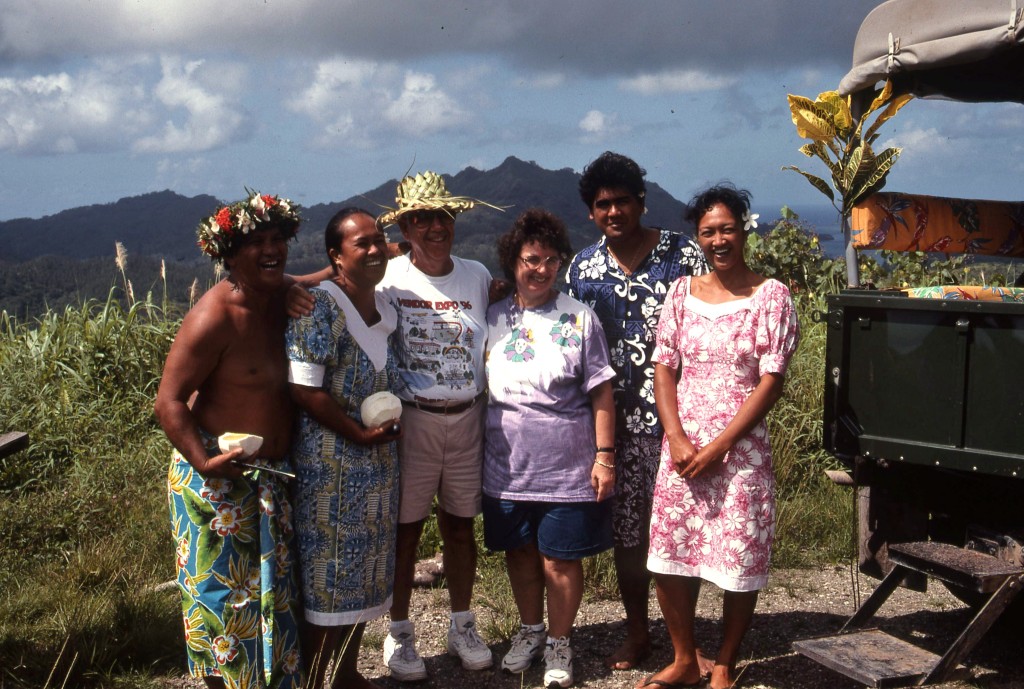
Overseas visitors and French Polynesian pose. * Photo: Ted Scull
Passenger Decks: The new ship is built with a towering 9-deck superstructure located aft, with the cargo handling forward. A pair of much needed elevators connects all decks. The 9th deck is the navigating bridge and quarters for the officers.
Price: $$ – $$$ Expensive
Included features: All excursions including barbecues ashore, and beer and wine with lunch and dinner.
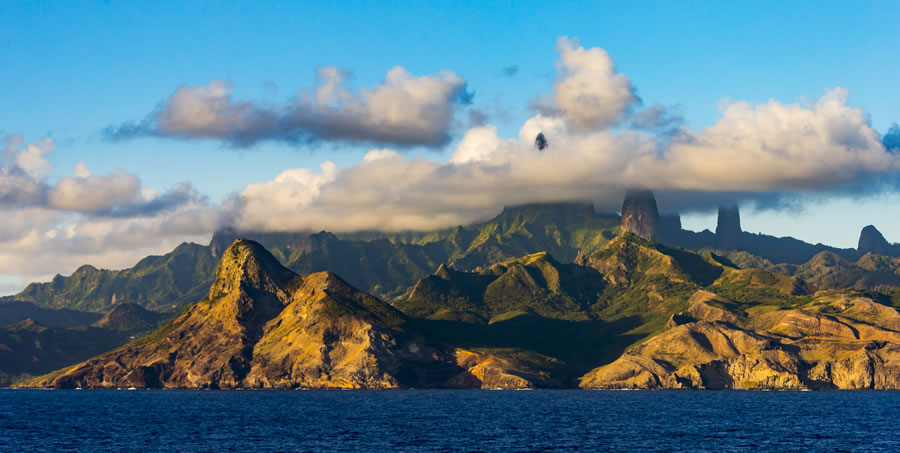
Dramatic island scenery at Ua Pou. * Photo: C.P.T.M.
Itineraries: Sailings are approximately every three weeks, and the island circuits last about 14 days, taking in 9 ports, a few called into twice. The night hours are spent sailing to the next port, and the days mostly anchored off with shore time between a few hours and a full day. Two sea days are likely. While not all port calls are listed, here follows an overview of the different types of activities available when visiting the islands. Takapoto is a beach day at a beautiful lagoon with a barbecue lunch; the anchorage at Nuku Hiva is a volcanic bay, and its beauty may have caused Herman Melville to jump ship! Four-wheel drive vehicles drive inland to an archeological site and another sacred to the islanders. Lunch is at a restaurant, with time for hiking; Ua Pou is a lunch stop and a village visit; Fatu Hiva is the most remote of the islands, and many locals are engaged in designing and carving art and crafts. Lunch is taken here with a hiking opportunity rated 8/10; Hiva Oa was the final home for the French painter Paul Gauguin and the Belgian singer Jacques Brel, and they are both buried here. Ua Huka offers optional horseback riding with Chileans bringing the horses in the mid-19th century; Rangiroa and Bora Bora are quintessential South Sea island resorts, and last opportunities for a beach day, hiking and sightseeing. When you disembark at Papeete, you have most definitely left paradise. For those with less time, 7- and 11-day cruises are also available by flying to an out island port and joining the ship there.
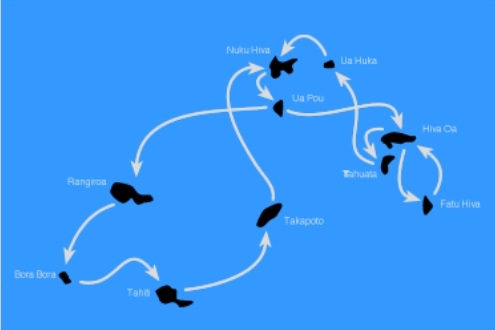
Ararui 5’s Interisland Route. * Photo: C.T.P.M.
Why Go? While interisland Pacific Ocean passenger services do exist elsewhere, the overnight accommodations tend to be basic and few will offer a cruise circuit to multiple islands. For tropical climate lovers in search of paradise amidst South Sea people, the region comes as close as any to the ideal. For those islands without regular air service, the ship is a lifeline and its arrival is an important aspect of life. Isolation means that the local culture is far more traditional than in highly commercialized Tahiti.
When to Go? The ship operates year-round. The best months are May to October, the driest and when the humidity is lowest. November to April is hot, humid and rainy with torrents falling in December and January, when rates are six times that in June to September. Actually, the daytime highs vary only a few degrees between the low to the mid-80s, and the nighttime lows from the high-60s to the mid-70s. All these averages are the norm, if there is such a thing today.
Cabins: Much of the accommodations are of cruise ship standards, and they are spread over 8 decks. 32 suites range from 194 sq. ft. to 441 sq. ft., plus 43 sq. ft. balconies (2 without). 31 Deluxe cabins: 140 sq. ft. to 205 sq. ft. and 43 sq. ft. balconies. 32 staterooms with portholes on the lowest 2 decks: 118 sq. ft. with king or twin beds; 6 at 178 sq. ft. with four twin beds; and 2 singles at 102. sq. ft. For locals, interislanders and backpackers: 4 dormitories for 4 passengers each with a porthole at 135 sq. ft.; and one dormitory with porthole (285 sq. ft.) for 8 persons, 4 uppers, 4 lowers and two bathrooms with shower. All non-dorm cabins come equipped with a desk, TV, safe, and fridge (except no fridge in staterooms). Deck space is provided for 45 for interisland travel.
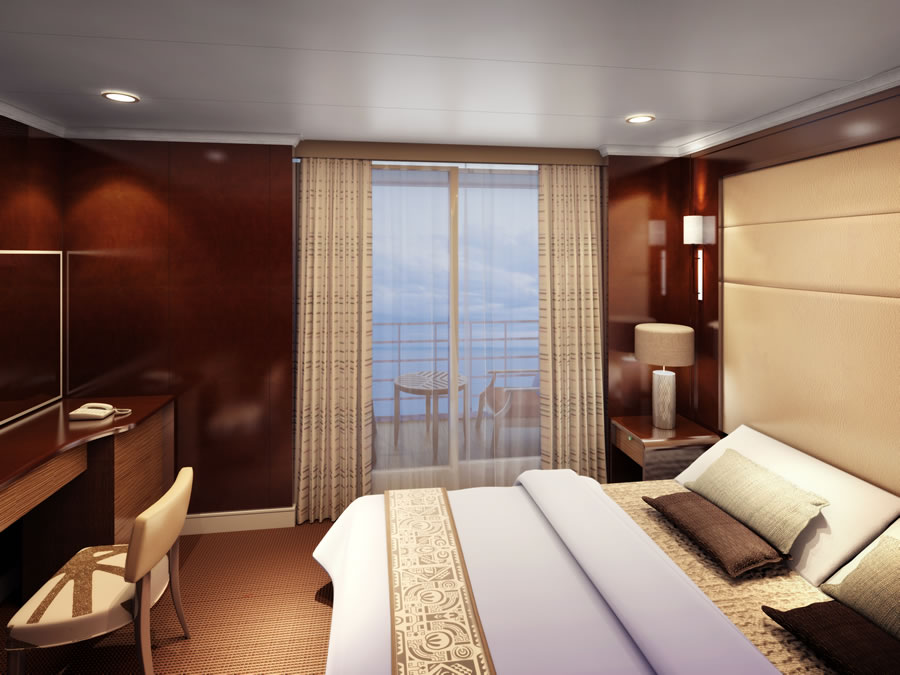
Presidential Suite. * Photo: C.T.P.M.
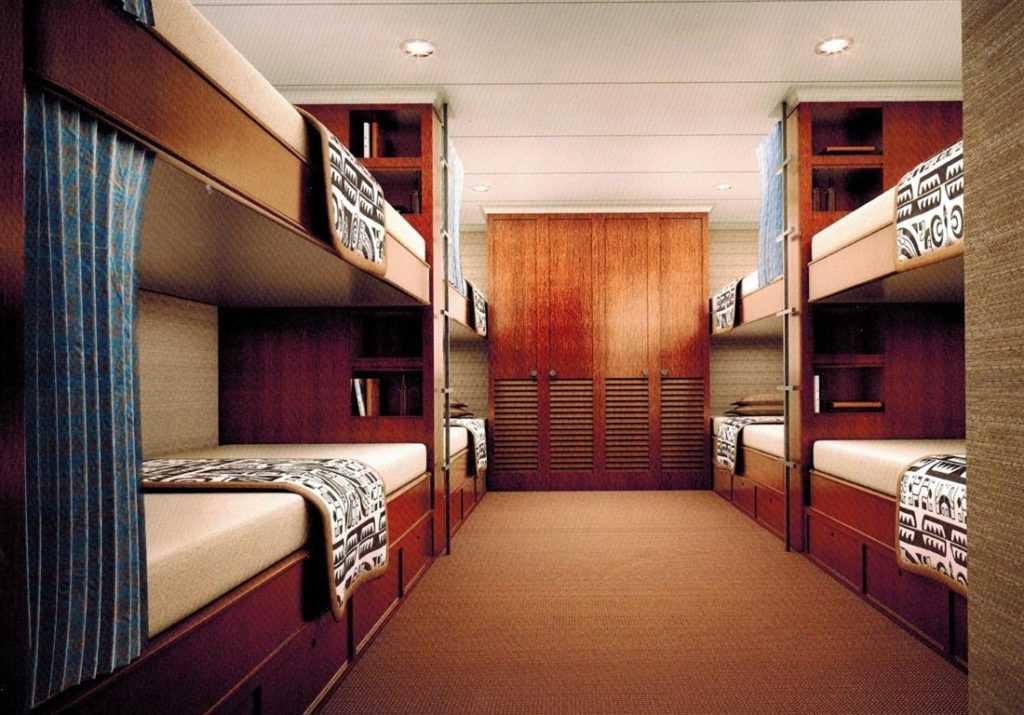
8-person dormitory as a contrast to the above suite. * Photo: C.T.P.M.
Public Rooms: Given the relatively moderate size of the ship and the fact that the passenger accommodations are stacked on half the hull length, there is a lot of up and down traffic (2 lifts), especially for those occupying the three lowest cabin decks. There are two lounges with bars and a forward-facing Skybar below the navigating bridge, plus flexible conference room spaces.
Dining: The cuisine is a blend of French and French Polynesian with lots of regional vegetables, fruits and seafood. Meals are served buffet style for breakfast while lunch and dinner offer menus and two seatings when the number of passengers warrant it, at mostly large tables. Wine is included at lunch and dinner.
Activities & Entertainment: The ship is equipped with fitness and massage rooms and an outdoor swimming pool. The enrichment program is given in French and English, and the name of the lecturers are listed next to the specific departures . Musicians perform occasionally at sea, and before and after dinner, with cabarets and dancing at night. The sought-after activities are the trips ashore to archeological sites, to meet the locals, see their way of life, their cultural traditions in music, dance, food and customs, enjoying the wonderful beaches and barbecues, and watching the cargo handling that brings most everything in and takes most everything out. Snorkeling is free while para-sailing and scuba diving are arranged with an independent operator.
Special Notes: To fully enjoy the shore trips, be sure you can climb and descend ladders to and from launches as some ports do not have sufficiently large docking facilities or weather may require the ship to anchor. Some landings may be through the surf, and those needing assistance will find a strong hand. The ship does not keep a precise schedule as much depends on the amount of cargo handling at each port as well as the weather. Rough seas can delay the ship and interrupt the freight operations. Some passengers have reported cultural differences can cause conflicts, especially when large groups from one country are involved. N.B. When visiting the C.P.T.M website for the first time, be sure to watch the captivating introductory video.
Along the Same Lines: Hurtigruten’s LOFOTEN would be the closest equivalent of a passenger-cargo ship though its territory is anything but tropical and the cabin accommodations are not nearly as roomy.
Contact: Compagnie Polynesienne de Transport Maritime, 2028 El Camino Real So., Suite B, San Mateo, CA 94403; www.aranui.com, 800-972-7268.
— TWS
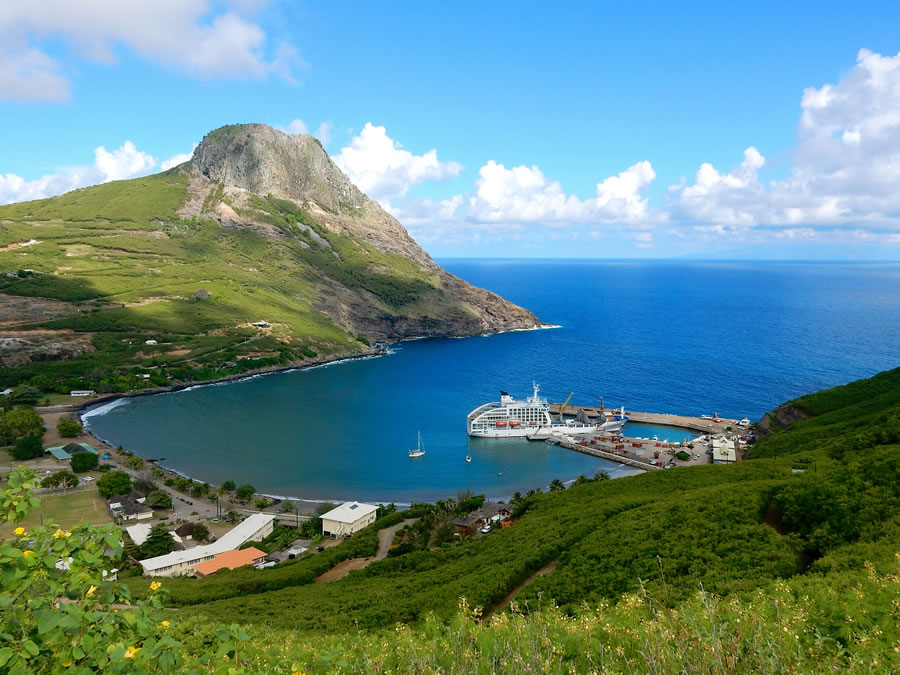
ARANUI 5 docked at Ua Pou. * Photo: C.P.T.M.
![]()
Posted In:



